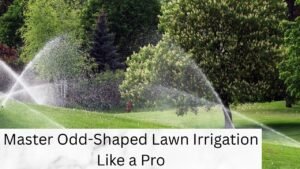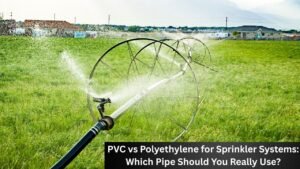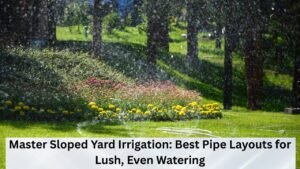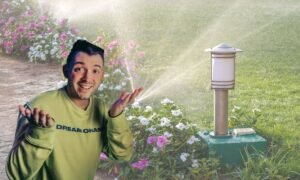Ever wondered why your lawn has dry patches even with a sprinkler system? The answer may lie in your sprinkler pipe size. Choosing the right pipe ensures even water distribution, reduces waste, and keeps your yard looking lush without driving up costs. In this guide, I’ll walk you through everything you need to know about sprinkler pipe size so you can design a system that works efficiently from day one.
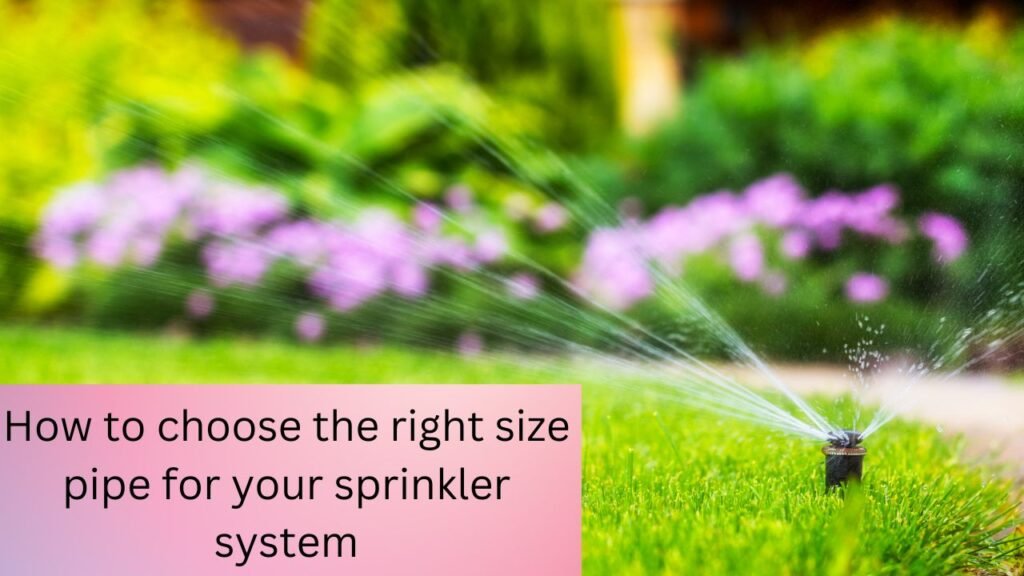
Why Pipe Size Matters
Imagine this: You’ve invested in a top-notch sprinkler system, but something’s just not right. The lawn’s unevenly watered, some areas are dry while others are swampy. The culprit? It might be the wrong pipe size. Choosing the right pipe is crucial for efficient watering, saving money, and even protecting your home from unnecessary water damage.
Choosing the right pipe size can make or break your irrigation system’s performance. Undersized pipes create pressure loss, while oversized ones drive up costs unnecessarily. In his YouTube video above “Pipe Size Matters – How to Read Irrigation Friction Loss Charts” (Mar 16, 2023), Sprinkler Nerd Andy explains how friction loss impacts water flow and system efficiency. Understanding these charts ensures you design a system that balances pressure, coverage, and budget.
Factors That Influence Sprinkler Pipe Size
1. Water Flow Rate and Pressure
Think of water flow rate as the volume of water moving through your pipes and water pressure as the force behind it. The two go hand in hand. A higher flow rate means more water moving, which could lead to the need for larger pipes if the pressure is high. If the pressure is low, even bigger pipes might not help much if they’re not sized correctly.
Real-World Example:
Imagine your sprinkler heads are rated for a high flow rate but your pipes are too narrow. You’ll end up with uneven watering, which could lead to brown patches and overwatered spots.
2. Sprinkler Head Efficiency
Different types of sprinkler heads have varying requirements. Fixed heads might work fine with smaller pipes, but rotating or impact heads often need larger pipes to maintain consistent pressure.
Example:
A fixed sprinkler head might be ideal for small lawns with tight spacing, but if you’re using rotating heads for a large area, you’ll need bigger pipes to handle the increased water flow.
3. Distance from Water Source
The farther the water has to travel, the more pressure you lose. It’s like trying to push a balloon through a long, narrow tube—less efficient than a shorter, wider one. Larger pipes help reduce this pressure loss, especially over long distances.
Quick Tip:
If your sprinkler system covers a large area or is located far from your water source, consider slightly larger pipes to maintain efficiency.
How to Calculate the Right Pipe Size
Step-by-Step Hydraulic Calculations
- Measure Flow Rate: Determine the gallons per minute (GPM) required for your system. You can find this in your sprinkler head specifications.
- Calculate Pressure Loss: Use a formula or an online tool to figure out how much pressure is lost over the length of the pipe. The basic formula is:
- Pressure Loss (PSI) = (Flow Rate^2) × (Pipe Length) × (Friction Loss Coefficient).
- Choose Pipe Size: Match your calculations with the recommended pipe size charts.
Online Tools:
If numbers aren’t your thing, online calculators like the Rain Bird Pipe Sizing Calculator can simplify things. Just plug in your data and let the tool do the rest.
Pipe Materials and Fittings
Material Showdown
- PVC (Polyvinyl Chloride): Cheap, easy to work with, but can be brittle in extreme temperatures.
- Polyethylene: Flexible and crack-resistant, great for colder climates but trickier to install.
- Copper: Long-lasting and resistant to corrosion, though it comes with a higher price tag and more installation hassle.
Material Comparison Table:
| Material | Cost | Durability | Installation Ease |
|---|---|---|---|
| PVC | Low | Moderate | Easy |
| Polyethylene | Moderate | High | Moderate |
| Copper | High | Very High | Difficult |
Fittings 101
Elbows, tees, and couplings are essential for connecting and directing water flow. Elbows help change direction, tees create branches, and couplings join pipe sections together.
Fittings Illustration:
A simple diagram showing these fittings can help you visualize how they fit into your system and their impact on pipe sizing.
The Fallout of Incorrect Pipe Sizing
The Cost of Doing It Wrong
Using the wrong pipe size can lead to some unpleasant consequences:
- Increased Water Bills: Inefficient watering due to improper pipe size can mean more water used and higher bills.
- Frequent Repairs: Incorrect sizing can lead to leaks or damage, requiring costly repairs.
Case Study:
One homeowner installed undersized pipes, resulting in constant pressure issues and high repair costs. Another went with oversized pipes, facing high initial costs and water wastage.
Additional Considerations
Energy Efficiency and Water Conservation
Proper pipe sizing isn’t just about keeping your lawn green—it also impacts energy consumption and water conservation. Larger pipes can reduce the need for additional pumps and help minimize waste.
Looking Ahead
Keep an eye on emerging technologies like smart sprinkler systems, which might affect your pipe size choices in the future. These systems can optimize watering schedules based on weather conditions, potentially reducing the need for larger pipes.
Conclusion
Choosing the right pipe size for your sprinkler system is crucial for achieving a lush, green lawn while keeping costs in check. By understanding factors like flow rate, sprinkler head efficiency, and distance to the water source, you can make informed decisions. Use hydraulic calculations, online tools, and professional advice to ensure your system is optimized for performance.
Ready to give your lawn the perfect sprinkler system it deserves? Consult with a professional or use reliable online calculators to get the right pipe size. A well-sized pipe system means a healthier lawn, lower costs, and a more efficient watering setup.
